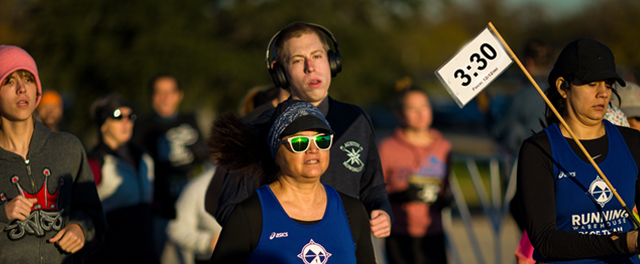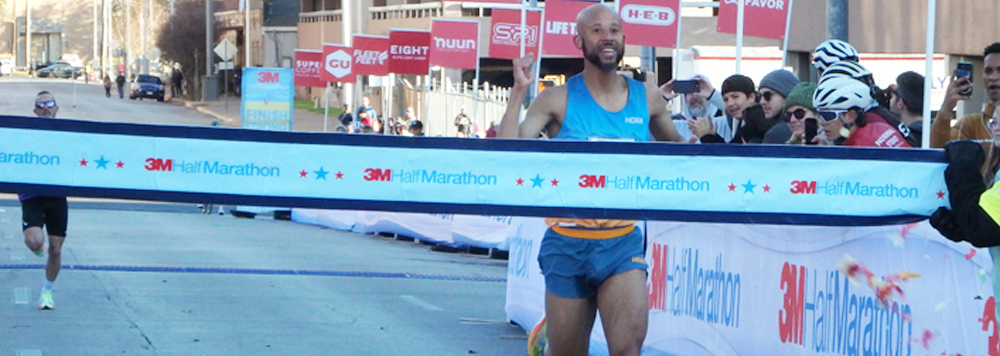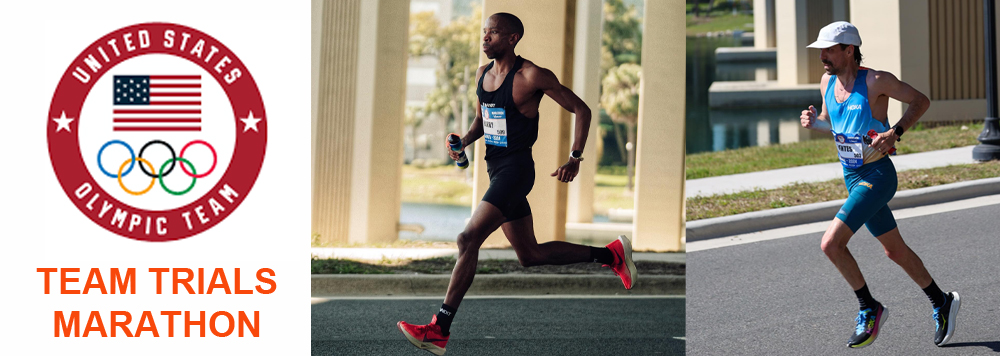The Ascension Seton Austin Marathon, set for Sunday, February 18, is coming up fast. Whether it’s your first marathon of your 10th one, you undoubtedly have goals. And unless your goal is simply to finish, that means a time goal. Achieving that goal has everything to do with setting a steady pace. While most runners instinctively know what pace they are running, maintaining that pace over 26.2 miles is another thing altogether. But there’s help on the way. Ever notice those pace groups? Those packs led by a runner carrying a sign that says 3:30- 8:00 min/mi and the like? If not, maybe it’s time you did. Those groups can play a key role in getting you to the finish line on time.
If your previous marathons have all been run without the help of a pace group, maybe you need as little convincing. Here’s a short list to prove to you how pace groups are super-helpful.
The pace group leaders are all highly experienced. Like metronomes, they have the ability to run the entire course at a steady/even pace. And there’s a pace group for everyone, no matter your speed. Pace groups include: 3:00, 3:05, 3:10, 3:15, 3:20, 3:25, 3:30, 3:35, 3:40, 3:45, 3:50, 3:55, 4:00, 4:05, 4:20, 4:35, 4:50.
Look ma, no watch! You don’t have to keep checking your watch and perform math calculations in your head. The pacers have it down.
Running with the pack. There’s no question that running in a pack over a long-distance evens out your “low” moments. It’s almost like you’re swept along with them. They help carry you along to the finish line.
Built-in companionship. Let’s face it. 26.2 miles is a long way to go when you’re running by yourself, even if there are plenty of other runners and spectators on the course. Running with a pace group, you exchange stories, encouragement and jokes as the miles fly by.
They know the course. Knowing the course is a huge part of successfully achieving your time goal, and pacers have it down. They know not to push too hard early on the uphill sections of Austin’s challenging course and they know to let the downhills help glide them along.
To slow or too fast? No problem. You can ease up and wait for the pace group behind you, or conversely, pick it up and catch a ride with the next group.
Still not convinced? How about this: Eliud Kipchoge, the greatest marathoner of all time, used pacers when he ran 1:59:40 to become the first human to break two hours in the marathon.
Upcoming Races: Saturday, February 10, at 8:30 a.m., the Cupid’s Chase 5K at San Gabriel Park in Georgetown. Sunday, February 11, the San Marcos Half Marathon (formerly Moes’ Half Marathon), 7:30 a.m. at the Tanger Factory Outlet in San Marcos.





